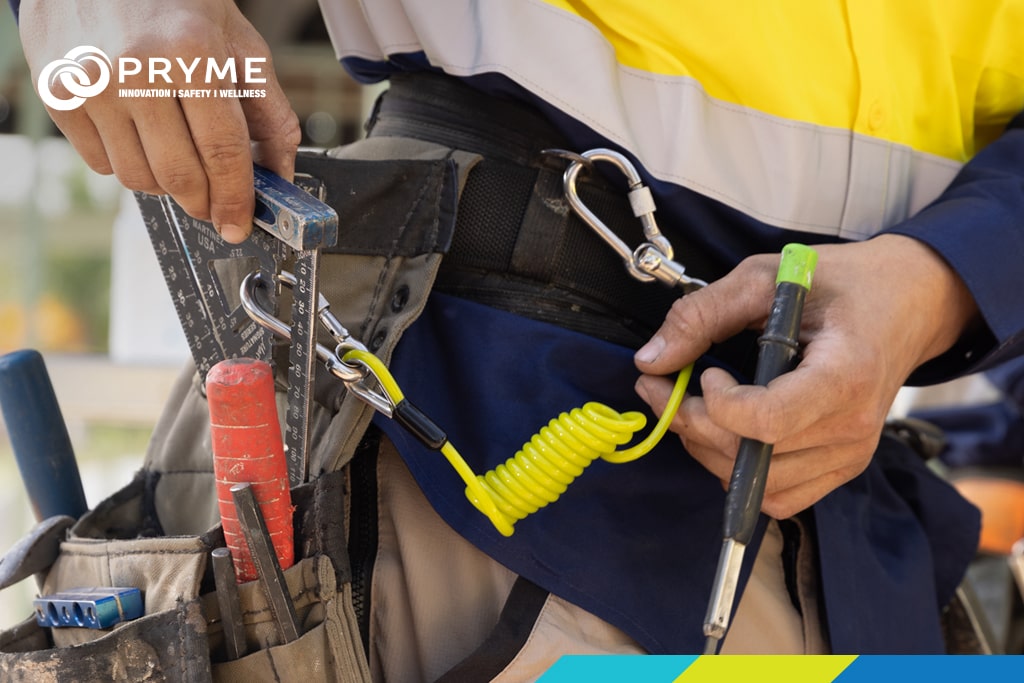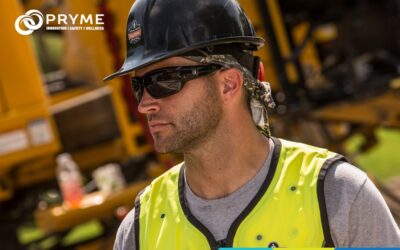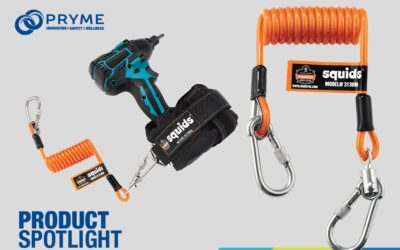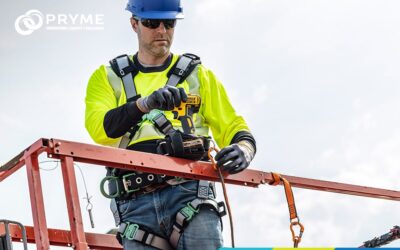A New Standard for At Heights Safety

Five Big Facts You Should Know About Dropped Objects Prevention Standard
ANSI/ISEA 121-2018 is a comprehensive standard outlining design, testing, and performance requirements for tool tethering systems and containers used to secure tools and equipment at heights. This standard covers three categories: tool traps, tool tethers, and tool topping, ensuring proper tethering systems are distinguished from inferior solutions. It is a voluntary consensus standard developed by the International Safety Equipment Association (ISEA) and adopted by the American National Standards Institute (ANSI). Although not directly enforceable, ANSI/ISEA 121-2018 has become a best practice in the industry.
1. Tethering and Container Equipment
ANSI/ISEA 121-2018 is a comprehensive standard outlining design, testing, performance, and labelling requirements for tool tethering systems and containers used to secure tools and equipment at heights. It covers three categories: tool traps, tool tethers, and tool topping, distinguishing proper tethering systems from inferior solutions like duct tape and string. Similar to ANSI Z359 for fall protection equipment, ANSI/ISEA 121 addresses dropped object prevention equipment. It does not specify specific usage or what needs to be tethered; instead, manufacturers provide instructions on proper equipment use, and companies or regulatory bodies determine when and what to tether.
2. Voluntary Consensus Standard
ANSI/ISEA 121-2018 is a voluntary consensus standard developed by the International Safety Equipment Association (ISEA) and adopted by the American National Standards Institute (ANSI). As a private non-profit organization, ANSI oversees the development of voluntary consensus standards for various products in the United States. While not directly enforceable by regulatory bodies such as OSHA, these standards often become best practices in the industry. OSHA can still reference ANSI standards under the General Duty Clause or through a Letter of Interpretation to enforce compliance.
3. The “Voluntary” Aspect and Understanding ANSI/ISEA 121 Dropped Objects Prevention Standard
Despite being voluntary, ANSI/ISEA 121 is essential for at-height safety. OSHA requires employers to address falling/dropped object hazards, making prevention a priority over protection. ANSI/ISEA 121 formalizes and reinforces the importance of prevention, providing grounds for OSHA to cite non-compliance under the General Duty Clause. The standard provides the necessary solutions and establishes compliant equipment (attachments, tethering, containers).
4. No Adoption Cycle or Grace Period
Unlike previous revisions of standards, ANSI/ISEA 121-2018 does not have an adoption time frame or grace period. This means manufacturers can release equipment that complies with the standard as soon as it is designed and tested, without waiting for a specific deadline. Similarly, end users can implement this equipment according to their policies and requirements without delay.
5. International Impact:
Currently, there are no similar global standards focusing on tethering and container equipment. While regulations in other regions require employers to provide a safe workplace free from dropped object hazards, they do not specify the types of controls to be used. ANSI/ISEA 121-2018 is expected to catalyse the development of similar equipment standards in other countries or regions. Companies like Pryme and Ergodyne are committed to being at the forefront of these international efforts.
How does height safety get to that next level?
- Collaboration and Compliance: The successful implementation of ANSI/ISEA 121-2018 Dropped Objects Prevention Standard relies on collaboration between manufacturers, end users, and regulatory bodies. By adhering to the standard’s requirements, manufacturers can ensure the production of reliable and compliant equipment. End users must incorporate ANSI/ISEA 121-2018 into their safety policies and procedures, considering it as a best practice for at-height safety. Regulatory bodies, such as OSHA, can utilise ANSI/ISEA 121-2018 as a reference to enforce compliance and promote safer work environments.
- Enhancing Safety and Efficiency: Adopting ANSI/ISEA 121-2018 Dropped Objects Prevention Standard not only mitigates dropped object hazards but also enhances overall worksite safety and efficiency. Proper tool tethering and secure equipment storage reduce the risk of injuries caused by falling objects, improving worker well-being. Additionally, preventing dropped objects increases productivity by minimizing interruptions and equipment damage, resulting in cost savings and smoother operations.
- Training and Education: To ensure the effective implementation of ANSI/ISEA 121-2018, adequate training and education programs are essential. Employers should provide comprehensive training on proper equipment use, maintenance, and inspection protocols. Workers must be familiar with the standard’s requirements, understand the importance of dropped object prevention, and be able to identify and report any equipment defects or hazards.
- Continuous Improvement: As technology advances and industry needs evolve, continuous improvement in dropped object prevention solutions is crucial. Manufacturers should stay up-to-date with advancements in materials, design, and testing methodologies to enhance the effectiveness and usability of tethering systems and containers. End users should actively engage with manufacturers, provide feedback, and share their experiences to drive innovation and improvement in the field of at-height safety.
As a leader in the industry, Pryme and Ergodyne remain committed to driving advancements in at-height safety. We will continue to innovate and develop cutting-edge solutions that adhere to ANSI/ISEA 121-2018 Dropped Objects Prevention Standard and meet the evolving needs of our customers. By working together, we can create safer work environments and reduce the risk of dropped objects, ultimately ensuring the well-being of workers across various industries with our range of DROP FREE ZONE tool tethers and lanyards.
Remember, understanding and embracing ANSI/ISEA 121-2018 is a collective responsibility that requires the commitment and collaboration of all stakeholders involved in at-height work.
RELATED: The Risk of Dropped Objects on Site – Dropped Object Consequence Calculator
REFERENCE: https://www.ergodyne.com/sites/default/files/media/documents/ansi-isea-121-2018-five-big-facts-you-need-to-know.pdf
Categories
Recent Posts
Brands
- Ergodyne
- Sqwincher
Sqwincher is an electrolyte enhanced beverage for effective hydration and is the recognised leader in providing hydration solutions to hot workplaces, to help reduce heat related illness and accidents. Keep your workers safe and productive with Sqwincher hydration that works.
- Maxiblock Sunscreen






